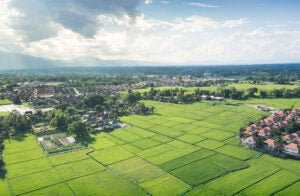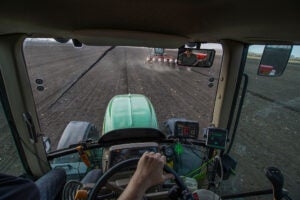The current world population is over 8 billion people and rising. It’s estimated that the population will be about 9.7 billion in 2050 and 10.4 billion by 2100. This means that we need to find a way to feed a lot more people in a fairly short amount of time, while keeping our existing food supply safe.
One way to get more food is to have more people produce food, but do we really need more farmers to feed people?
Making farms more efficient is one way to avoid having more farmers. If each farm is able to produce more food to feed more people, we’ll solve our problem. American farmers are already doing this. There are currently 3.37 million farm producers and 1.9 million farms in the United States. This is the lowest number of farms in the U.S. since 1850. The number of farms in the U.S. peaked at 6.8 million in 1935.
Amid this huge decrease in farms, efficiency has been on the rise.

According to the USDA’s Economic Research Service, total farm output nearly tripled between 1948 and 2021, growing at 1.46 percent annually. At the same time, aggregate input use declined 2 percent or -0.03 percent annually. U.S. farms and ranches used fewer inputs in 2021 than in 1948 but produced significantly more output. This is due to many things including technological advancements, new varieties of crops, better handling techniques for livestock, genetic improvements, and so much more.
U.S. ag is continuing to increase efficiency and produce more with less. This also goes hand-in-hand with sustainability, which is an area that American ag is focusing on alongside producing more food. With emerging technology, continued advancements in genetics and genetic engineering, and research that shows how to improve agriculture, there isn’t much doubt that ag’s efficiency will continue to rise as time goes on.
Farm size is also on the rise, with farms getting bigger and more efficient. From 2017 to 2022, the average size of farms increased by 5 percent to 463 acres per farm, while the number of acres in farmland decreased by over 2 percent. While small farms make up just over 88 percent of all U.S. farms, more production comes from large farms that have a gross cash farm income of over 1 million dollars each year. For example, large-scale family farms make up about 3 percent of farms and almost 52 percent of the value of production for all farms. Farm size will likely continue to go up, and with it goes efficiency and production. These larger farms have wider access to new technology and processes that increase production.

Another consideration about whether we need more farmers is that America’s producers are aging. According to the 2022 Census of Agriculture, farm producers have an average age of 58.1 years old. This is up from 57.5 years old in 2017. This trend has been going on for a while, but the number of young and beginning farmers and ranchers is also rising.
There are definitely barriers for young people to start farming, especially if they don’t have a family farm to inherit. While it isn’t a huge concern that our farmers are getting older, we will definitely need some younger and beginning farmers and ranchers to take over when others start to retire. This also doesn’t mean that we need to increase the number of farmers, but we at least need new farmers to take the reins from those who retire.
Of course, a lot of this depends on economic conditions and how many farmers there are. If we suddenly see a drop in the number of farms in the U.S, along with a drop in the number of farm producers, it’s likely that we’d need more farmers. If farm numbers and the number of acres in farmland stays relatively similar to where it is now, relying on technology and increasing efficiency should get us to where we need to be, without adding more farmers.
It’s hard to confidently say whether we need more farmers to feed a growing population. The role of new technology, advancements in breeding and genetics, and improved farming practices has a bigger impact on agricultural output and productivity than the number of farmers.
As long as we continue to prioritize technological advancements, improve public perception, build on political relationships, while ensuring that our food supply remains secure, there’s not much doubt that agriculture will rise to meet the challenge of feeding 9.7 billion people in 2050.
Michelle Miller, the Farm Babe, is a farmer, public speaker, and writer who has worked for years with row crops, beef cattle, and sheep. She believes education is key in bridging the gap between farmers and consumers.



